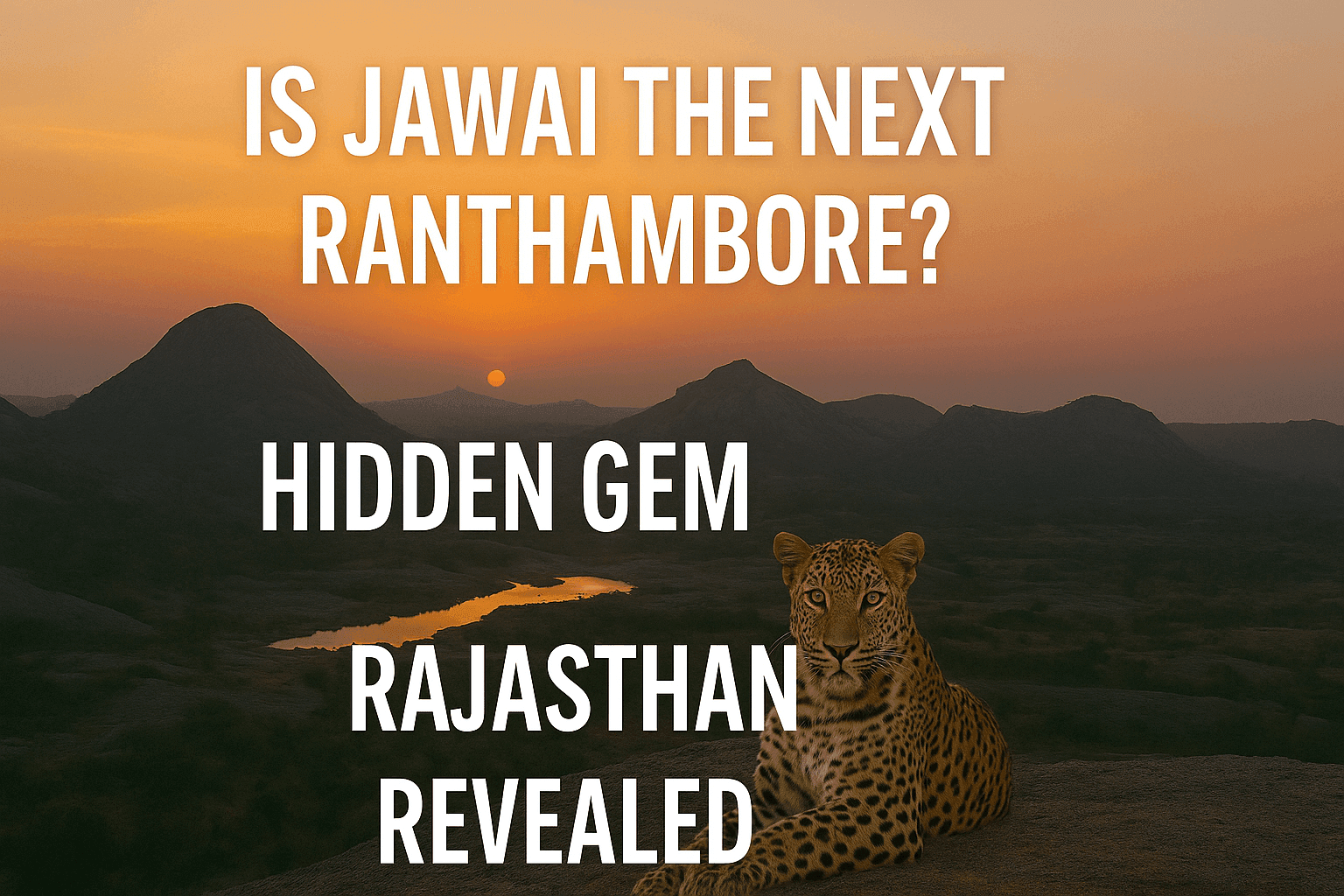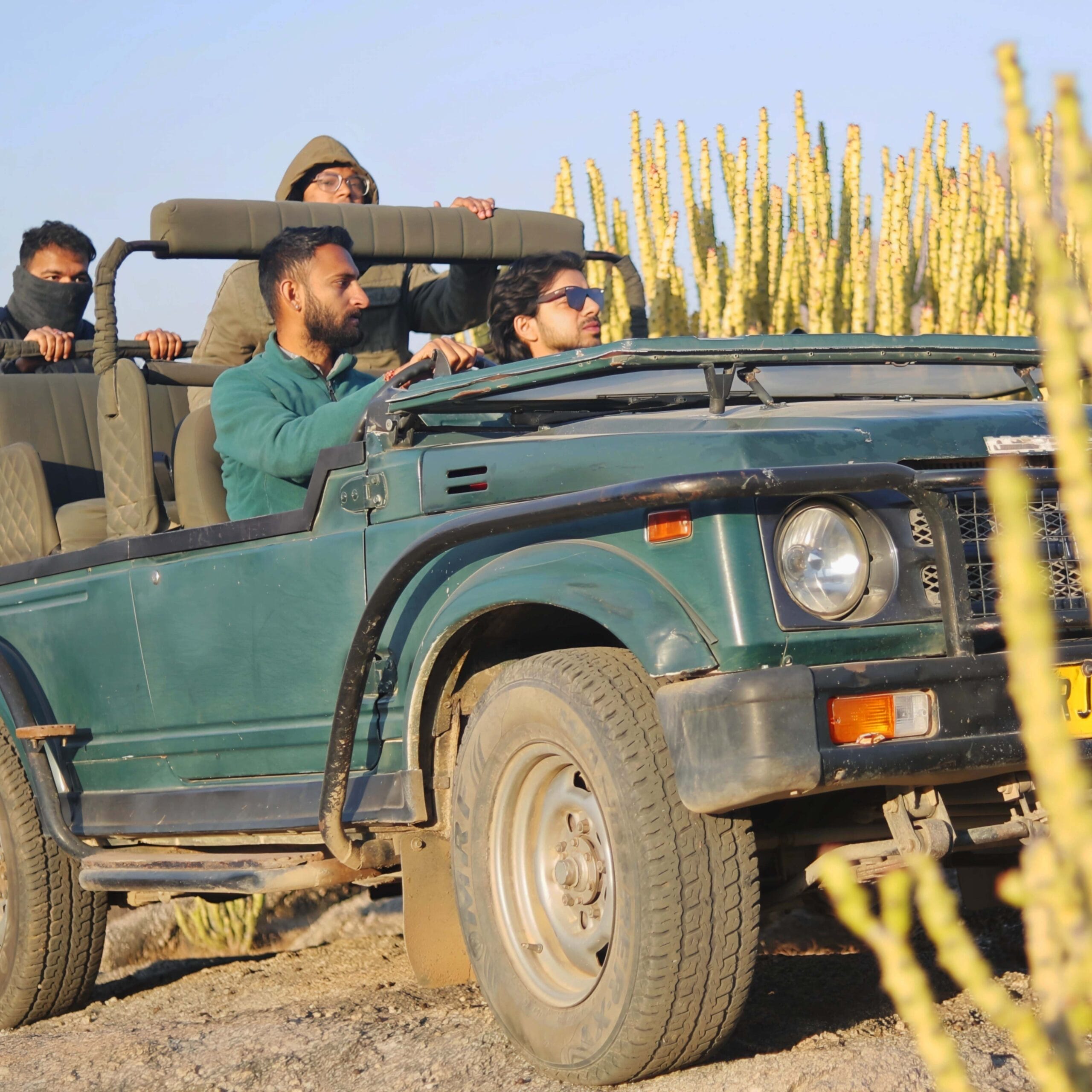A Rising Star in Rajasthan’s Wild Kingdom
Ranthambore may dominate the headlines when it comes to wildlife tourism in India, but a quieter, more mystical destination is starting to steal the spotlight—Jawai.
Situated near the town of Bera in Rajasthan’s Pali district, Jawai is unlike any other wildlife destination. It offers thrilling leopard sightings amidst volcanic granite hills, without the restrictions or crowds of a national park. This region is not only rich in biodiversity but also deeply spiritual, where leopards, temples, and villagers coexist peacefully.
Is Jawai the next Ranthambore? Let’s uncover what makes this hidden sanctuary a must-visit destination in 2025 and beyond.
1. Jawai vs. Ranthambore: A Leopard’s Playground vs. A Tiger’s Realm
- Ranthambore is famous for its majestic tigers roaming a forested area dotted with ancient ruins.
- Jawai, on the other hand, is the land of leopards—open, rocky, and sacred.
The leopards of Jawai are wild, free-ranging, and frequently seen during safaris, with a sighting probability as high as 95%, especially near Devgiri Hill, Leopard Rock, and the Jawai Bandh.
Fun fact: Leopards here are often spotted sitting atop granite boulders or temple rooftops, completely unfazed by human presence!
2. The Landscape: From Lava to Legends
The Jawai landscape is a surreal blend of prehistoric granite hills, thorny scrub forests, and the expansive Jawai Dam. These hills were formed by volcanic activity millions of years ago, offering perfect natural hideouts for leopards.
But what truly makes it magical is the spiritual energy — many temples such as Kambeshwar Mahadev and Devgiri Temple are built right into the cliffs where leopards live. Villagers consider these big cats to be sacred, believing they are under the protection of Lord Shiva.
There are zero recorded cases of leopard attacks on humans or livestock in this region — a testament to the harmony between man and beast.
3. Exclusive Safaris with Expert Trackers
In contrast to the over-tourism at Ranthambore, safaris in Jawai are intimate and uncrowded.
- Private gypsies only (no canters or mass tourism)
- Safaris are conducted twice a day: Morning (6:00 AM – 9:00 AM) and Evening (4:30 PM – 7:00 PM)
- Each safari is guided by local experts and leopard trackers, who know the leopards by name, location, and family lineage.
You’re not just watching wildlife—you’re understanding it deeply, often hearing real stories about each leopard family and their movement patterns.
4. Stay Options: Luxury Amidst the Wild
Jawai caters to everyone — from budget travelers to those seeking luxury wilderness retreats.
Top stays include:
- Jawai Pugmark Safari Stay – In front of leopard caves, adventure-themed
- Brij Jawai (Relais & Châteaux) – Ultra-luxury with private decks and bonfire dinners
- Leopard Lair Camp – Rustic charm with modern comfort
- Jawai Wild Stay – Eco-luxury tents with curated village experiences
Expect gourmet Rajasthani meals, candle-lit bush dinners, bonfires, wildlife documentaries, and jeep pick-ups for every safari.
5. What Else Can You Experience in Jawai?
Aside from leopards, Jawai offers a multi-dimensional experience that includes:
🐊 Crocodile Safari at Jawai Bandh
The dam is home to dozens of marsh crocodiles basking near the banks—an exciting contrast to the big cats.
🐦 Birdwatching Paradise
In winter, Jawai turns into a haven for bird lovers with species like:
- Flamingos
- Bar-headed geese
- Grey herons
- Sarus cranes
- Indian eagle-owl
🛕 Cultural Tours
Meet the Rabari tribe, known for their red turbans and fascinating camel herding culture. Their spiritual connection to leopards and land will leave you mesmerized.
🌅 Sunset Point Jeep Tour
End your day with a 360-degree view of the hills bathed in golden light—an Instagram moment you’ll never forget.
6. How to Reach Jawai
- By Air: Udaipur Airport (150 km), Jodhpur Airport (170 km)
- By Train: Jawai Bandh Railway Station (well-connected to Delhi, Ahmedabad, Jaipur)
- By Road: 6-hour drive from Jaipur, 3.5 hours from Udaipur or Mount Abu
Despite being remote, Jawai is easily accessible—making it ideal for weekend getaways or road trips.
7. Why You Should Visit Jawai in 2025
- No permit hassles like national parks
- More affordable and customizable safari packages
- Lesser-known = less crowded, more personal
- One of the only regions where leopards are found outside of protected sanctuaries
And yes—the best time to visit is from October to April for clear skies, lush post-monsoon greenery, and peak wildlife sightings.
Is Jawai the Next Ranthambore? Final Thoughts
Jawai is not a replacement for Ranthambore—it’s a revelation in itself.
It’s not just about leopards or landscapes. It’s about coexistence, connection with nature, and sacred wilderness.
If Ranthambore is a majestic chapter in India’s wildlife book, Jawai is the poetic page you never knew existed—untamed, unfiltered, and unforgettable.
Plan Your Leopard Safari with JawaiSafari.org
✅ Verified luxury and budget stays
✅ Private gypsy safaris with expert trackers
✅ Crocodile spotting, village tours, birdwatching & more
✅ Personalized travel assistance and group discounts
👉 Visit JawaiSafari.org to book your experience or WhatsApp us for custom itineraries.
FAQs – Planning Your Jawai Trip
Q. What is the ideal duration to stay in Jawai?
2 nights and 3 days is perfect for 2 safaris and full exploration.
Q. Are kids allowed on safaris?
Yes. Kids above 4 years enjoy the experience; parental supervision is advised.
Q. Are the resorts pet-friendly?
Some resorts offer pet stays—contact us for customized bookings.
Q. Is Wi-Fi and mobile network available?
Yes. Most resorts offer good network and Wi-Fi, though you’re likely to enjoy the digital detox.
Q. Can I combine Jawai with other destinations?
Absolutely! Combine it with Udaipur, Jodhpur, Mount Abu, or Kumbhalgarh for a rich Rajasthan tour.
Let me know if you’d like a matching Instagram caption, image suggestions, or tour flyer content for this blog.


